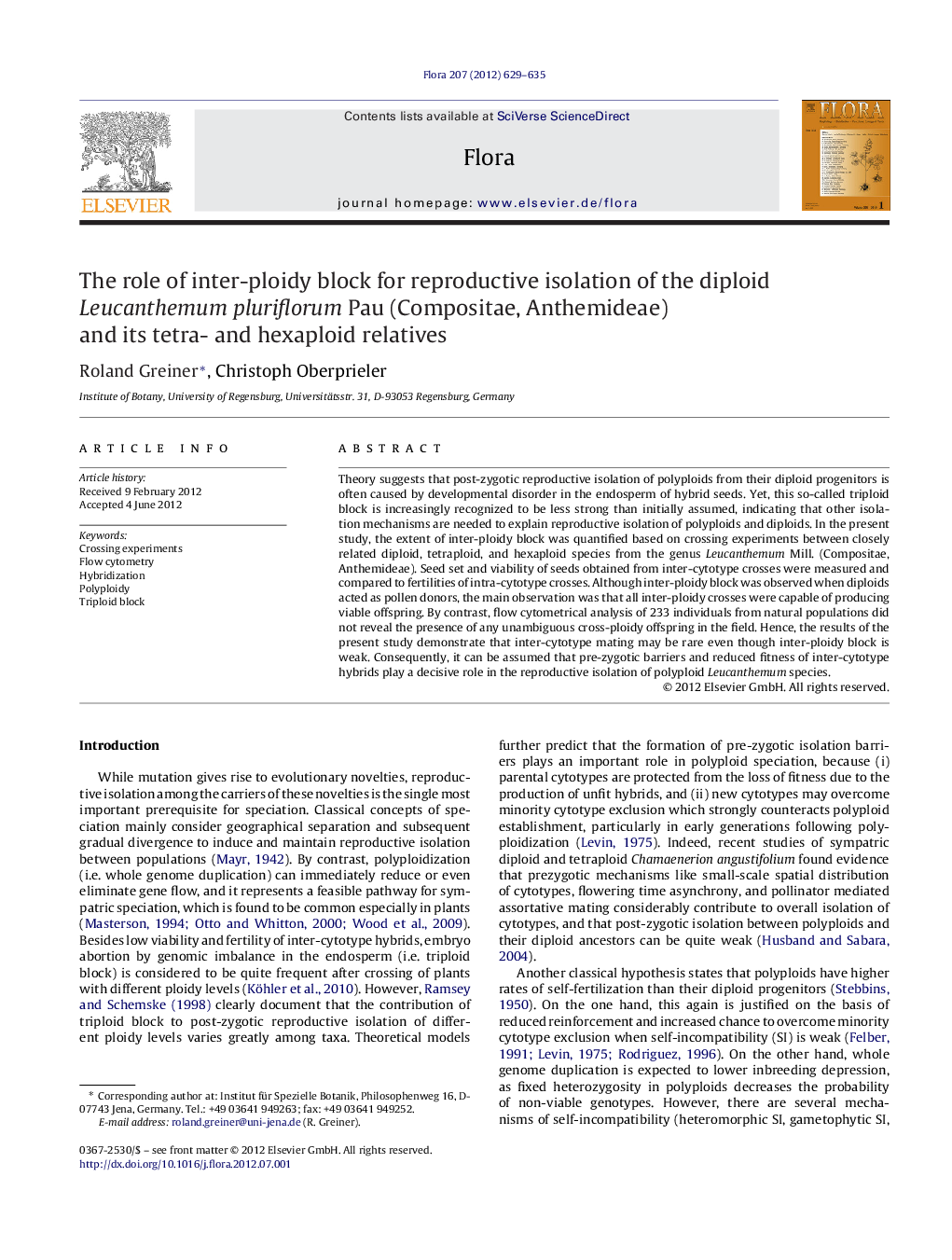| Article ID | Journal | Published Year | Pages | File Type |
|---|---|---|---|---|
| 2179783 | Flora - Morphology, Distribution, Functional Ecology of Plants | 2012 | 7 Pages |
Theory suggests that post-zygotic reproductive isolation of polyploids from their diploid progenitors is often caused by developmental disorder in the endosperm of hybrid seeds. Yet, this so-called triploid block is increasingly recognized to be less strong than initially assumed, indicating that other isolation mechanisms are needed to explain reproductive isolation of polyploids and diploids. In the present study, the extent of inter-ploidy block was quantified based on crossing experiments between closely related diploid, tetraploid, and hexaploid species from the genus Leucanthemum Mill. (Compositae, Anthemideae). Seed set and viability of seeds obtained from inter-cytotype crosses were measured and compared to fertilities of intra-cytotype crosses. Although inter-ploidy block was observed when diploids acted as pollen donors, the main observation was that all inter-ploidy crosses were capable of producing viable offspring. By contrast, flow cytometrical analysis of 233 individuals from natural populations did not reveal the presence of any unambiguous cross-ploidy offspring in the field. Hence, the results of the present study demonstrate that inter-cytotype mating may be rare even though inter-ploidy block is weak. Consequently, it can be assumed that pre-zygotic barriers and reduced fitness of inter-cytotype hybrids play a decisive role in the reproductive isolation of polyploid Leucanthemum species.
